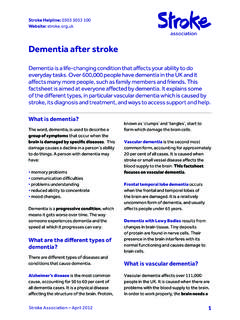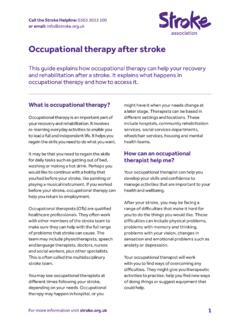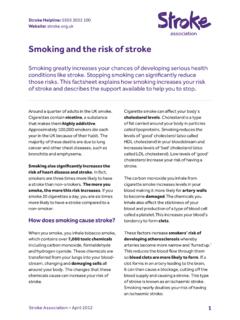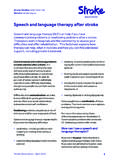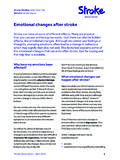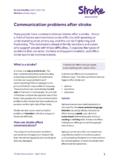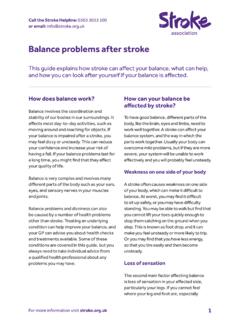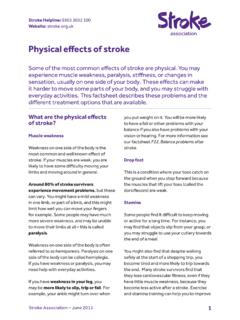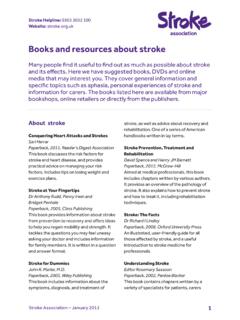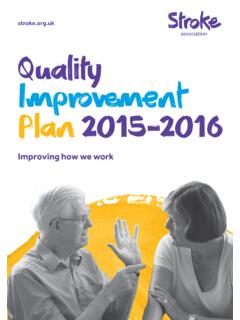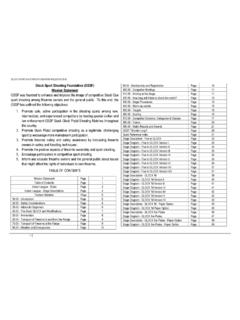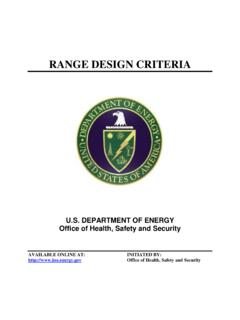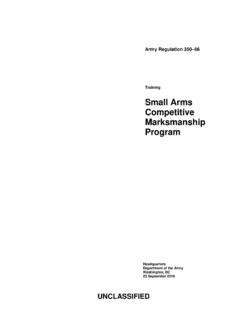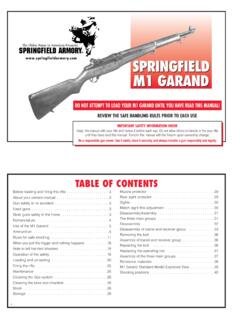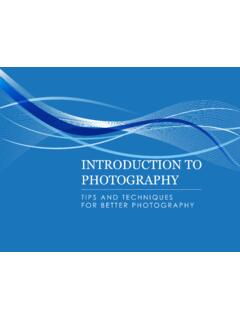Transcription of Pain after stroke
1 Call the stroke Helpline: 0303 3033 100 or email: more information visit a stroke , around 30% of survivors experience pain . This is most likely to happen soon after a stroke , but can also develop some time later. Types of post- stroke pain include muscle and joint pain , headaches, and painful sensations like tingling. Some of the main types of pain are: spasticity and contractures shoulder pain central post- stroke pain other conditions, including swollen hands and on the cause of the pain , treatments like medication and physiotherapy are often helpful. Some causes of pain can be treated, but for some people, post- stroke pain can last a long time.
2 This guide also examines techniques like pain clinics and TENS devices for managing any long-term and contractures A stroke can damage the way the nerves control your muscles. This can lead to muscles contracting for long periods or going into spasm, which can be painful. This muscle tightness is known as spasticity, or hypertonia. A stroke can cause muscle weakness down one side, also known as hemiparesis. Spasticity affects the weakened muscles, often in the arms and hands, but also in the legs. It may affect up to a third of of stroke survivors. If it s not treated, spasticity can lead to the muscles being permanently shortened.
3 The joints and muscles can become so stiff that it is impossible to move them, causing a is spasticity treated?If you have muscle weakness after your stroke you should be assessed for spasticity, and receive therapy to reduce the risk of contractures. Treatments may include a combination of physiotherapy, injections of botulinum toxin type A and other medications. Physiotherapy If you have spasticity you should have physiotherapy every day to move your joints. This will help to stretch your muscles, keeping them flexible and reducing the possibility of contractures. Your physiotherapist will gently place your affected limb into as many different positions as possible using techniques called positioning, passive movement and active pain after strokeThis guide will help you to understand some of the causes of pain after stroke , and the treatments that are available.
4 It also gives details of useful organisations that can provide information and after strokeCall the stroke Helpline on 0303 3033 100 2movement. See our guide F16, Physiotherapy after stroke for more toxin type AYou may be given botulinum toxin type A as an injection directly into your muscle. The main brand names used for this treatment are Botox, Dysport and Xeomin. Botulinum toxin type A works by blocking the action of the nerves on the muscle, reducing your muscle s ability to contract. This reduces muscle tone (makes the muscle less tight), which can help you to straighten out your limbs.
5 This treatment is mainly used for post- stroke spasticity in the hands, wrists and ankles. The muscle-relaxing effects of botulinum toxin type A usually last for about three months, and you should not notice any changes in sensation in your muscles. The treatment should be given with further rehabilitation such as physiotherapy, or other treatments like splinting or casting to ensure that any range gained in the muscle is maintained. You should also have an assessment three to four months after the treatment, and be offered further injections if they are considered you have generalised spasticity, or if botulinum toxin treatment doesn t reduce spasticity in the injected muscle, other types of medication can help reduce stiffness and pain that often comes with spasticity.
6 There are different types of drugs that you could be given. They all work in slightly different ways, but they all help to relax your muscles. When your muscles are relaxed they can move more easily and you can stretch them further. You may also find that it becomes easier to straighten or bend your affected limbs, and you may notice fewer muscle spasms. You will usually be prescribed baclofen or tizanidine first. If these drugs do not work, there are other drugs that may help, but they should only be prescribed by someone who specialises in managing are contractures treated?Splinting and casting If you develop contractures, your physiotherapist may use a splint or a cast that moulds to or lies along your affected limb and holds it in place.
7 This treatment helps to stretch out the muscles in your tight limbs and is usually combined with physiotherapy. Sometimes this treatment is used to try to prevent contractures from forming by making sure that your body is not in an abnormal position. Unfortunately sometimes splints and casts can be uncomfortable. Talk to your physiotherapist about what would be best for you. Shoulder painShoulder pain affects up to a quarter of stroke survivors, and usually happens on the side of your body that is affected by the stroke . There are many different conditions that cause shoulder pain and while some improve with targeted treatment, it sometimes becomes a long-term condition.
8 Frozen shoulderAfter a stroke you may find that your shoulder is very stiff and that it hurts when you move it. This is called frozen shoulder, or capsulitis. The shoulder is a ball and socket joint, with a rounded shape at the end of the upper arm fitting into a hollow space in the shoulder blade. Muscles and ligaments hold the arm bone in place. There is a layer of tissue that surrounds this joint which is called a capsule. pain after strokeFor more information visit your arm muscles are very weak, stiff or paralysed, the effect of gravity puts a strain on your ligaments and your capsule.
9 This can cause these parts of your shoulder joint to become inflamed, stretched and damaged. Having weakness in your arm muscles may contribute to this pain in your shoulder. SubluxationAnother cause of shoulder pain is shoulder subluxation. This means partial dislocation, when the rounded end of the upper arm bone moves slightly out of its socket. This might be because the muscles that normally hold this joint in place are too weak to do this is shoulder pain treated?PreventionIf you have weakness in your arm following your stroke , your medical team will try to prevent shoulder pain developing.
10 They will make sure that anyone who handles your arm knows how to do so with care and without causing strain on your shoulder joint. They should also ensure that your arm and shoulder are positioned correctly. Correct positioning is vital because it can help to reduce the strain on your ligaments and capsule, helping to prevent frozen shoulder from developing. It may also help to prevent your shoulder blade and upper arm bone from moving apart (subluxation). Your medical team may use foam supports to make sure that your shoulder is supported in the correct position. Your arm can also be supported using a pillow.
